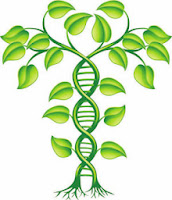 The Lambton County Archives recently held a presentation on
genetic genealogy where presenter Carolyn Abraham explained the science behind
using DNA testing to reveal secrets in your family ancestry. Carolyn is a former
medical science reporter for the Globe
and Mail and author whose recent non-fiction book The Juggler's Children: A Journey into Family, Legend and the Genes that Bind Us
has been shortlisted for the Governor General's award for 2013. (If you are
interested in obtaining a copy, please contact The Book Keeper.)
The Lambton County Archives recently held a presentation on
genetic genealogy where presenter Carolyn Abraham explained the science behind
using DNA testing to reveal secrets in your family ancestry. Carolyn is a former
medical science reporter for the Globe
and Mail and author whose recent non-fiction book The Juggler's Children: A Journey into Family, Legend and the Genes that Bind Us
has been shortlisted for the Governor General's award for 2013. (If you are
interested in obtaining a copy, please contact The Book Keeper.).jpg) |
| Presenter Carolyn Abraham. |
Carolyn explained during her presentation that this book
chronicles her personal experience with genetic genealogy as well as the
how-to's and potential issues involved in this avenue of genealogy. There were
always family mysteries surrounding both of Carolyn's great-grandfathers and
the birth of her daughter around the time of the human genome project spurred
her to research her ancestry.
Types of DNA Tests
As Carolyn explained, the "genome is a portal to the past" in that it can reveal where in the world our ancestors came from and how we are related to others. There are three basic DNA tests which all require a cheek swab:
1) Mitochondrial DNA Test: since mtDNA is passed from mother to children,
this form of testing is limited by the fact that only women pass this DNA on.
mtDNA does not change quickly from one generation to the next, so it is a
powerful tool to reveal if people had a common female ancestor. This is limited
since it can only reveal the commonality, and not when that commonality
occurred (i.e. could be five years ago or 500 years ago.)
2) Genome Scan Test: scans
chromosomes from mother and father to provide a breakdown of ethnic percentages
and ability to connect with relatives within approximately the last 5
generations.
3) Y-DNA Test: available for males only since the Y
chromosome passes from father to son, this test can reveal ancestral paternal
lines and allow you to connect with genetic cousins and also reveal your
haplogroup (which area of the world your ancestors came from.)
For all of these tests, after you send a cheek swab to the
company, they analyze the DNA and compare it against other samples in their
database. They will then contact you with the results (which vary depending on
which test you pay for) but generally, they can tell you if you have genetic
relatives (those whose DNA is close to yours meaning you share a common
ancestor) and your ethnic background.
.
.
Possible Ethical Issues
When you are testing something as personal as DNA, it is important to be aware of possible ethical concerns right from the beginning. There is always the potential to find that a relative you may be testing is not genetically related (i.e. father is not the biological father.) This issue is so common that software has been designed to catch these "false paternities" which has been estimated to account for about 10% of tests.
 |
| DNA testing can reveal results which affect the entire family. |
It’s your obligation to give people the full information and potential results
before they agree to contribute to your research. This not only impacts them,
but their children and the wider family. DNA testing always has the potential
to open up closed doors, so you should establish who you will be sharing
information with at the beginning of your research.
Recommendations for Further Information
Carolyn recommends the company Family Tree DNA and suggests that
those seeking more genetic genealogy information check the website of the International Society of Genetic Genealogy. This
non-profit group promotes the use of genetic testing in genealogy, and has many
free resources and links on their website.
Conclusion
Testing for DNA can help reveal secrets in family trees and
fill in the blanks where paper records do not exist. It is a powerful tool to
supplement traditional archival research. As always, the staff at the Lambton
County Archives are here to help you with this research and we are also interested
to hear your stories of genetic genealogy usage.
The above blog post was written by guest blogger Archivist Heather Lavallee.